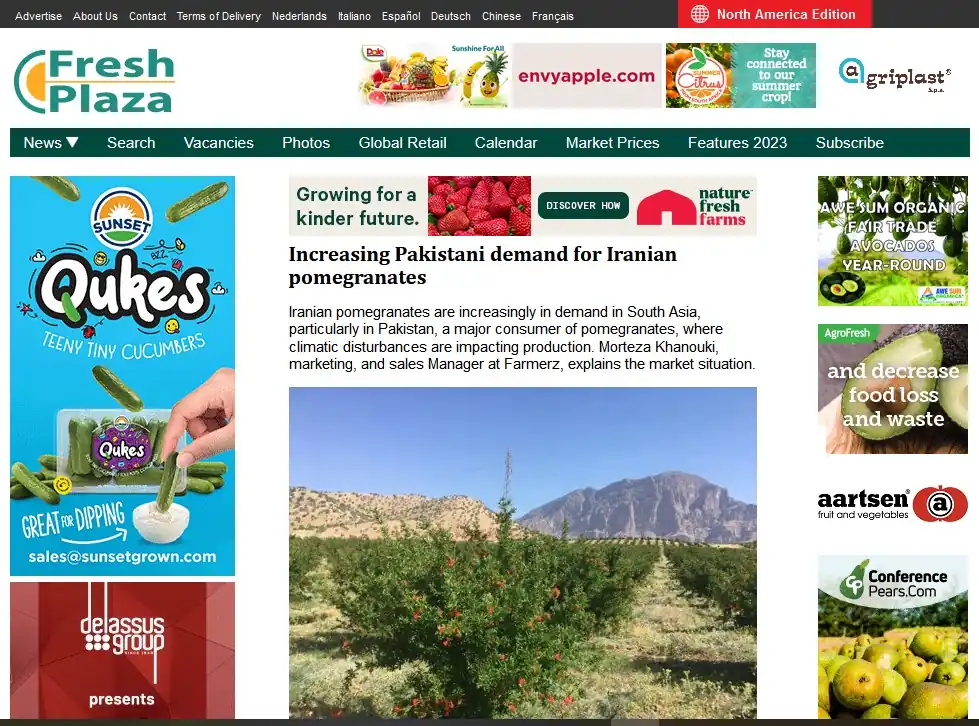Farmerz Sales and marketing manager in an interview with Farsh Plaza
Increasing demand in Pakistan market for Iranian pomegranates
Iranian pomegranates are increasingly in demand in South Asia, particularly in Pakistan, a major consumer of pomegranates, where climatic disturbances are impacting production. Morteza Khanouki, marketing, and sales Manager at Farmerz, explains the market situation.
Morteza says: “Iran is the world’s third largest producer of pomegranates, with a cultivated area of 90,000 hectares. Historically, Iran is the homeland of the pomegranate, and the fruit has a spiritual value for Iranians; it is widely consumed during holidays, resulting in strong demand on the domestic market. On foreign markets too, the consumption of pomegranates is an important aspect of culture throughout the South Asian region, as in India and Pakistan.”
The very high consumption of pomegranates, in the context of declining production in South Asia, is opening up new markets for Iranian exporters. Morteza explains: “Iranian pomegranates are exported to Russia, the United Arab Emirates, Qatar, and Oman. We even export some of our varieties to India, an major producing country in the pomegranate industry. But today, with recurrent floods disrupting production in South Asia, we see new opportunities emerging.”

These markets are turning to Iran because of the quality of its production”, assures Morteza. “We have a wide variety of pomegranates, with different looks and tastes, at different times of the season. There are 10 of the most commercial varieties, divided into early and late varieties, which help us provide fresh fruits to our customers. Yields can vary from 15 tons per hectare to 100 tons, depending on region, variety, and operations. The season starts in the last week of October and lasts until the last week of December. Export calendars run until April.”
The exporter concludes: “At Farmerz, we grow 150 ha of pomegranates, with a yield of 15 tonnes per ha last year, and an expected yield of 40-50 tonnes after 3 years. This sharp improvement in productivity is due to the fact that our trees were young last year. We continue to serve our traditional markets, notably Russia and the Arabian Peninsula countries. But we also want to follow the development of South Asian markets, particularly Pakistan.”




